The world's largest palace complex, "Gu Gong" (in Chinese) was started in 1407 and was completed 12 years later. It covers 74 hectares, surrounded by a moat, a 10-metre high wall, and consists of over 8700 rooms. It is like the biggest exclusive club ever. You could only enter if given express permission by the emperor, and you had special gates to use. The emperor had his own freaking gate, and pity the fool who tried to use that one….and there were door bitches at every entrance.
My first trip into the Forbidden City was part of a boot-camp tour group, so the below is in no way an extensive review or guide. It's just some pics taken by an awe-struck Australian as we were guided through the Meridian gates from one end of the Forbidden City to the other.
We entered the city from a side gate and went through all the 3 main courtyards. And when I say "courtyards", I mean gigantic arenas the size of football fields.
I honestly never expected the Forbidden City to be this huge.
The afternoon sun was being filtered by a typical Beijing haze, but it was still humid and hot. And we weren't the only people there. A huge amount of people were wandering through.
It was hard to take pics of the place without including swarms of tourists, but here are a few to get a feel for the place.
Statues of lions guard most of the entry points. This beautiful roaring bronze was on the first hall after Wu Men (South Gate). For more info on the gate & other aspects of the mega-palace, click here.
View from one of the main courtyards. You can see more living quarters and buildings on the sides, which weren't open to the public. This gives an idea of the scale of the place. The main courtyard we walked through was just the ceremonial processions area, the place is much larger than what we saw. Considering it housed many courtesans, servants, workers, minions etc.
The stone balconies and steps leading up the main halls of each courtyard were beautifully carved. With curves softened by age, it felt strange to think that this was never open to the public and was viewed by so few of the population. Now look at it.
All along the main courtyards, there are no trees. It's boiling hot in summer, but the reason for the lack of trees is that it was actually a rule. There was a fear that trees along the ceremonial area would allow for assassins to hide themselves and gain access to the emperor. So the main courtyard doesn't have any trees at all.
Emperor's desk in the Hall of Mental Cultivation. This is just one of the many halls…. Elaborate decorations, carvings and colours now shaded in dust and grey haze. However, the magnitude of the place still comes through.
This pic gives a better idea of the detail and design of the ceiling. The emperor was considered the "son of heaven", and his interior designer definitely took this theme on board. Vast expanses, ornate decorations, vivid colours……It was visual overload.
This hall is notorious for the fact that this is where the Empress Dowager CiXi would sit behind the yellow curtain and "guide" the young Emperor in his decision making. She basically ruled China from behind this yellow curtain, and the hall remains as it was in her time.
The emperor's rooms/ halls are no longer open to the public. About 10 years ago when my mum travelled to China, the public was allowed to enter rooms and get up close to the artifacts. These days, you're crowded at the door with a bunch of other tourists, using your zoom lense to view the other side of the room.
 I was taking way too many pics of the detail in the architecture. It was overwhelming. This detail on the roof was (I think) at the Hall of Literary Glory.
I was taking way too many pics of the detail in the architecture. It was overwhelming. This detail on the roof was (I think) at the Hall of Literary Glory.
 Greens, golds, reds, blues, ochres……there's so much here to take in, and each courtyard has these buildings all along the way.
Greens, golds, reds, blues, ochres……there's so much here to take in, and each courtyard has these buildings all along the way.
This archway/ gate was part of one of the side gardens. More private living quarters, this was my favourite part of the tour. Especially as it had trees!
The age of this part of the gardens was evident as there was little re-colouring.
Even the ceilings on the verandahs were elaborately painted. I guess it made sense, considering the level of confinement and isolation that emperor and his family would live in, this type of visual distraction would handy.
The texture of the pillars – red paint craked over the centuries.
The swastika image pattern along the walls. The swastika is an ancient Buddhist symbol. It's ironic that a racist nut-bag used it and now racist people all over the world identify with this Asian symbol. I wonder how many tatoos would be removed if skinheads found out they had a Buddhist symbol on the skin! hahahaha!
I say peace-loving people should take this symbol back.
The rock garden in the side-area we were allowed to chillout in.
A pagoda overlooking the gardns. Again, we weren't allowed to enter it and were steered out of the garden pretty quickly.
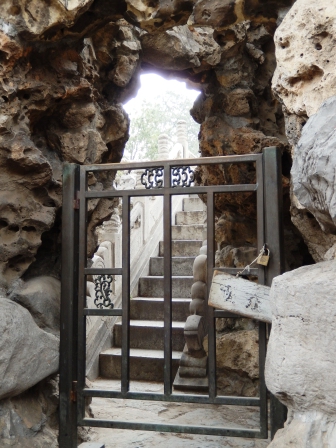 More little nooks that we weren't allowed to enter, but these little side-areas did give me a greater understanding of the scale of the place.
More little nooks that we weren't allowed to enter, but these little side-areas did give me a greater understanding of the scale of the place.
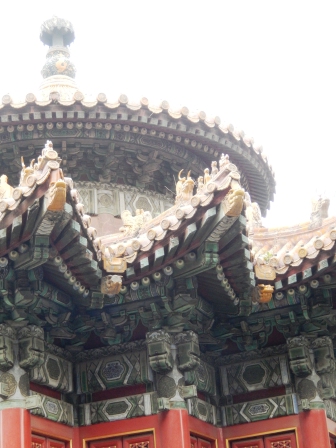 Detail of the roof in the garden.
Detail of the roof in the garden.
More detail on the doors of the Imperial garden leading out of the Forbidden City.
 We exited out of the Forbidden City using this gate.
We exited out of the Forbidden City using this gate.
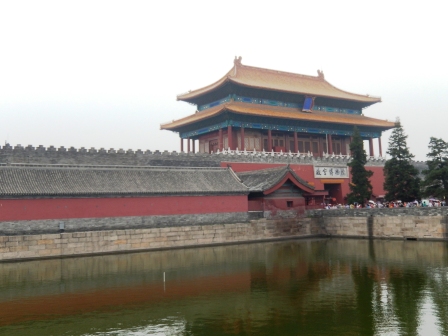 View looking back at the last gate, as we walked around the waterway surrounding the Forbidden City.
View looking back at the last gate, as we walked around the waterway surrounding the Forbidden City.
 Despite the hazy weather, it was a gorgeous introduction into the vast palace, history and heritage that had housed over 2000 workers to fend for 1 family for over 500 years.
Despite the hazy weather, it was a gorgeous introduction into the vast palace, history and heritage that had housed over 2000 workers to fend for 1 family for over 500 years.
Mind, blown. 🙂
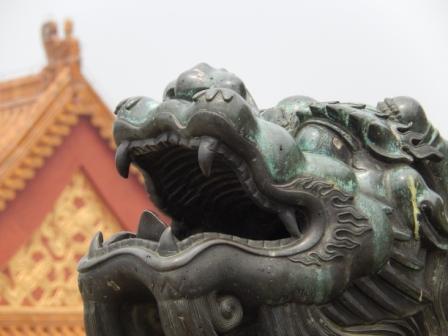
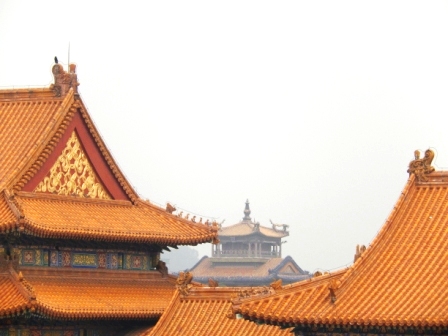
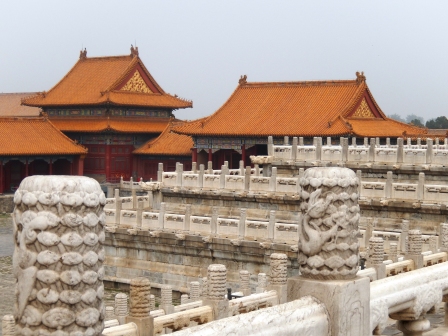
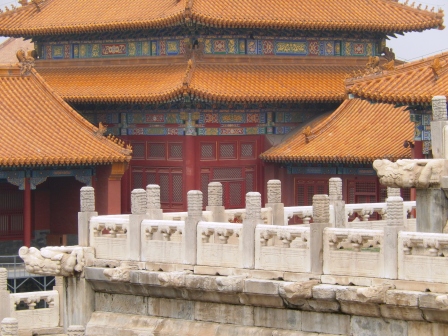
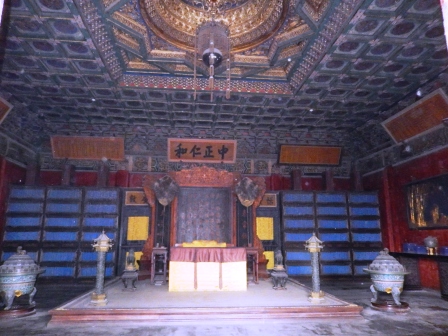


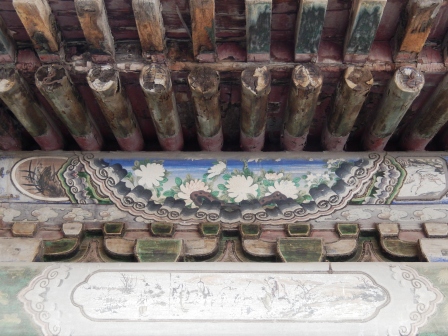
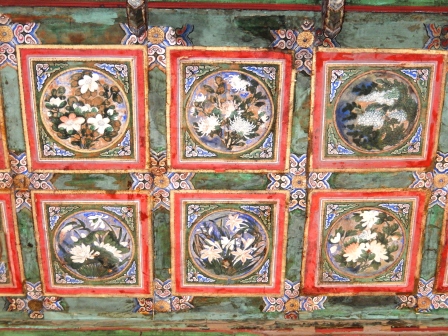
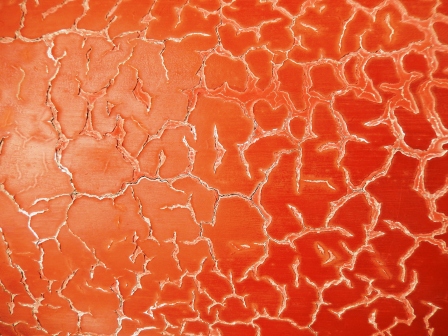
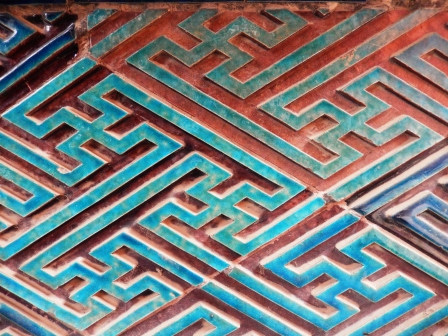

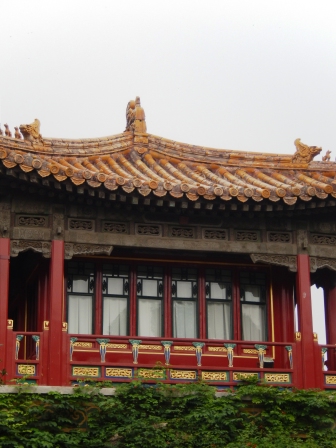
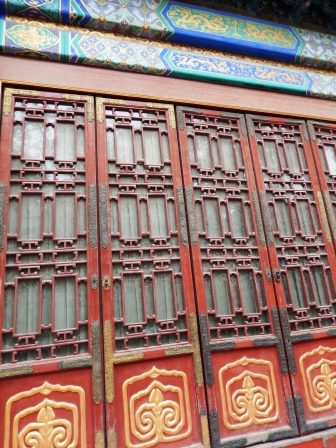
I gotta visit that palace before I punch my ticket for the realm of shadows!
Thanks for the comment! I encourage you to do it – it’s quite challenging to explain how vast the place is and the depth of the history. Hope the post helped a little – but nothing beats being there. 🙂